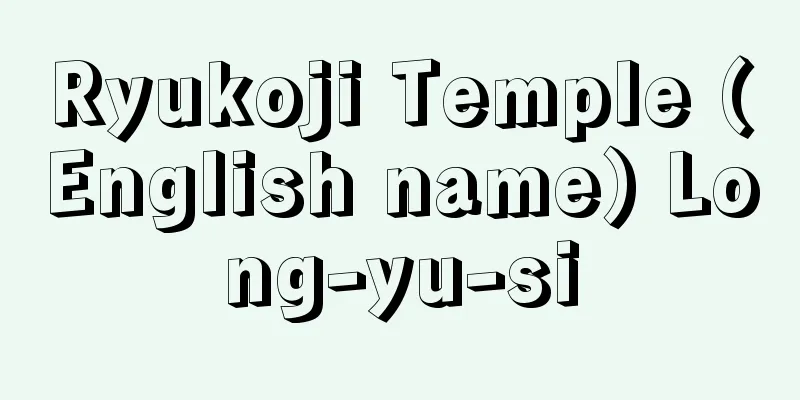Speciality - Meibutsu

|
It refers to selected, excellent tea utensils with a long history. The word meibutsu originally meant an object with a name or inscription, and it was first used in the world of tea ceremony utensils in the entry for February 4, 1434, in the inventory of Daigoji Temple's head priest Mansai's "Mansai Jugō Nikki" (Diary of Empress Mansai). The word meibutsu is thought to have been a spontaneous name that was used among those in a certain social class who could accept certain types of utensils, but with the establishment of the tea ceremony, it can be said to have become a general name for utensils that were treasured by such people as Ashikaga Yoshimitsu, Yoshinori, Yoshimasa, and Murata Juko. The book Usoshu (1572) states, "We should respect famous items. They were once imperial treasures, and we are grateful to see them now. We should respect famous items that are not former imperial treasures." This is thought to have led to the term meibutsu (famous items) becoming established as the name of tea utensils that were once imperial treasures or were comparable to imperial treasures. Thus, Yamanoue no Sojiki (1588), also known as the Collection of Famous Tea Utensils, appeared. Soji lists tea utensils by type that were owned by famous warriors and tea masters, including Yoshimasa and Juko, and gives an evaluation of each one. During the Edo period, this method of organizing vessels by type gave rise to works such as "Ganka Meibutsu-ki" (published in 1660) and "Chukō Meibutsu-ki" (compiled around the Genroku to Genbun era (late 17th century to early 18th century)). Throughout the Edo period, the term meibutsu (famous object) was used in a very broad sense, including famous object or famous object-like object. However, it is usually divided into three types: dai meibutsu (great famous object), meibutsu (famous object), and chuko meibutsu (middle-reconstruction famous object). These terms are said to have originated in Matsudaira Fumai's Kokon Meibutsu Ruiju (Collection of Ancient and Modern Meibutsu) (published 1789-1797), in which Fumai divides them into seven levels: homono (treasure object), dai meibutsu (great famous object), chuko meibutsu (middle-reconstruction famous object), meibu nami (middle-reconstruction famous object), kaminobe (upper level), chunobe (middle-reconstruction famous object), and shimonobe (lower level). Dai meibutsu (great famous object) refers to objects from the Higashiyama period before Sen no Rikyu. Meibutsu (famous object) are those from the Rikyu period, and chuko meibutsu (middle-reconstruction famous object) are those selected later by Kobori Enshu. Daimeibutsu refers to tea utensils made by tea masters from Higashiyama Gyottsu to Takeno Jo'o. Also, famous utensils during the Rikyu period are simply called meibutsu, but these are tea utensils that Oda Nobunaga and Toyotomi Hideyoshi had Tsuda Sokyu and Sen no Rikyu evaluate or collected in what they called meibutsu hunting. Chuko meibutsu refers to masterpieces of tea utensils selected by Kobori Enshu, so they are also called "Enshu meibutsu." They are masterpieces such as Seto Toshiro and other Nochigama and Kuniyaki that were not included in the meibutsu. There are an enormous number of them, including not only the treasures of Enshu recorded in the so-called "Enshu Kuracho" but also those owned by the various feudal lords of the time. In addition to the above three classifications, the term meibutsu is used in a variety of ways. Some well-known examples include the "Yawata meibutsu" (famous item) owned by Shokado Shojo, the "Ennan meibutsu" (famous item) that was held in high esteem as a famous tea utensil in the Yabunuchi family, the "Senke meibutsu" (famous item) that was held in high esteem as a famous tea utensil in the three Sen schools, the "Honganji meibutsu" (famous tea utensil) that was handed down to Ishiyama Honganji Temple in Settsu Province, and the "Matsuya Sanmeibutsu" (three famous items) that refer to the three items handed down to the Matsuya lacquerer in Nara: the "Hakuro Ryokuso-zu" (White Heron and Green Algae Painting) by Jo-ki, the "Matsuya Katatuki" (shoulder stick), and the "Zonseibon" (three famous items) of Matsuya. There are also a number of books bearing the names of famous things, such as "Meibutsu Kamaki" and "Meibutsu Kama Motoshi Nayose," which list famous kettles, "Meibutsu Meiri Kama Motoshi Nayose," for appraising famous tea caddies, and "Meibutsu Ki," which lists the famous things owned by connoisseurs of Sakai. Other examples include "meibutsu gire," a name for textiles that were introduced from the Kamakura period to the mid-Edo period, and "meibutsu kire," a name for particularly excellent calligraphy among ancient gire. Furthermore, local specialties are generally referred to as "such-and-such famous things," and terms such as "meibutsu professor" and "meibutsu man" are also used. [Kouichi Tsutsui] [Reference] |Source: Shogakukan Encyclopedia Nipponica About Encyclopedia Nipponica Information | Legend |
|
選定された由緒のある優れた茶道具をいう。名物とは本来「名」または「銘」のつけられた物という意であり、茶の湯道具の世界に使われるようになったのは、醍醐寺座主満済(だいごじざすまんさい)の目録『満済准后(じゅごう)日記』の「葉茶壺(はちゃつぼ)、九重(ここのえ)卜号名物」(永享(えいきょう)6年〈1434〉2月4日条)などである。名物とは、ある種の器物を受容できる階層の間でよばれるようになった自然発生的な呼称と考えられるが、茶道の成立とともに足利義満(あしかがよしみつ)・義教(よしのり)・義政(よしまさ)や村田珠光(じゅこう)などに愛玩(あいがん)された器物の総称名となっていったものといえよう。『烏鼠(うそ)集』(1572成立)という書に「名物を敬事(うやまうこと)、むかし御物(ぎょぶつ)なりしを、只今(ただいま)拝見し手にふるゝ事忝(かたじけなし)と申事也(なり)、昔御物ならぬ名物は、少(すこし)心持かくるなり」とあって、名物とは昔の御物か御物に比肩される茶器の名として定着した呼称となっていったものと考えられる。かくして『茶器名物集』の別称をもつ『山上宗二(やまのうえのそうじ)記』(1588成立)が登場する。宗二は器種別に義政や珠光をはじめ著名な武人や茶人の所持した茶器を列挙して、それぞれに評価を下していく。こうした器種別編成法は江戸期に入ると『玩貨(がんか)名物記』(1660刊)や『中興名物記』(元禄~元文ころ〈17世紀末~18世紀前半〉の成立)を生む。 江戸時代を通じて名物という呼称は、何々名物、あるいは名物手何々という呼び方まで含め、実に広範なものとして展開していく。しかし通常は次の3種に分類されることが多い。大(おお)名物、名物、中興名物である。これらの呼称は松平不昧(ふまい)の『古今(ここん)名物類聚(るいじゅ)』(1789~97刊)に始まるとされるが、そのなかで不昧は、宝物、大名物、中興名物、名物並、上之部、中之部、下之部の7段に分けている。大名物というのは、千利休(せんのりきゅう)以前の東山(ひがしやま)時代のものをいう。名物というのは、利休時代のものであり、中興名物というのは、時代が下って小堀遠州(えんしゅう)が選定したものをいう。大名物とは、すなわち東山御物をはじめ、珠光から武野紹鴎(たけのじょうおう)に至る茶匠の手になる茶器のことである。また利休時代に著名になった道具を単に名物というが、それは織田信長や豊臣(とよとみ)秀吉が、津田宗及(そうきゅう)や千利休らに品定めさせたり、名物狩りと称して収集した茶器のことである。そして中興名物は、小堀遠州の選定した茶道具の名品の称であるため、一名「遠州名物」ともいう。瀬戸藤四郎(とうしろう)以下後窯(のちがま)、国焼(くにやき)などの逸品で、名物に漏れた品を選んだものである。いわゆる『遠州蔵帳(くらちょう)』などに記載されている遠州の秘蔵品だけでなく、当時の諸大名が所持していたものを含め、おびただしい数に上る。 以上の3種の分類のほかにも名物という呼称は多様に使われている。松花堂昭乗(しょうかどうしょうじょう)の所持した名物である「八幡(やわた)名物」、藪内(やぶのうち)家において名物茶器として尊重された「燕庵(えんなん)名物」、三千家において名物茶器として尊重されたとする「千家名物」、摂津国石山本願寺に伝来した名物茶道具「本願寺名物」、奈良の塗師(ぬし)松屋に伝来する徐煕(じょき)筆白鷺緑藻図(はくろりょくそうず)(鷺絵(さぎのえ))、松屋肩衝(かたつき)、存星盆(ぞんせいぼん)の3種を称した「松屋三名物」などはよく知られたところである。また、名物の釜(かま)を記した『名物釜記』『名物釜所持名寄(なよせ)』、名物茶入鑑定のための『名物目利聞書(めききききがき)』、堺(さかい)の数寄者(すきもの)の所蔵する名物目録を掲げた『名物記』など、名物の名を冠した書も散見する。そのほかにも、鎌倉時代から江戸時代中期にかけて渡来した織物の称である「名物裂(ぎれ)」、古筆切(ぎれ)のなかでもとくに優れた名筆の称である「名物切」などがある。さらに一般的な呼称として、地方の名産を「何々名物」と称したり、名物教授、名物男などと使われることもある。 [筒井紘一] [参照項目] |出典 小学館 日本大百科全書(ニッポニカ)日本大百科全書(ニッポニカ)について 情報 | 凡例 |
<<: Famous fabrics - Meibutsugire
Recommend
Granary - Kokusoin
〘Noun〙 During the Heian period, one of the governm...
Norfolk (English spelling)
A seaport city in southeastern Virginia, United St...
trikāya (English spelling) trikaya
...In Esoteric Buddhism, he is included in the pa...
Pinus pumila; dwarf stone pine
An evergreen shrub of the Pinaceae family, native ...
Song line - Kako
The name of a style of poetry in classical Chines...
Surprise attack
〘 noun 〙 To attack an enemy by an unexpected means...
Perihelion passage
… Keplerian elements, for celestial bodies orbiti...
Nguyen Tu - Nguyen Tu
...This novel, set in a specific era and featurin...
Peter Elmsley
1773‐1825 A British scholar of ancient Greek liter...
Indian mouse deer
An animal of the Mammalia class, Order Artiodacty...
Linear form
A linear mapping from a linear space V over a fiel...
Polar front - Polar front
A large front that forms at the boundary between ...
Complete Denture
...This is done to make the retainer function mor...
The five internal organs - Gozoroppu
In traditional Chinese medicine, these are the na...
Tsukiji Honganji Temple
This temple is located in Tsukiji, Chuo Ward, Tok...

![Mississippi [river] - Mississippi](/upload/images/67ccf03fa44d3.webp)







